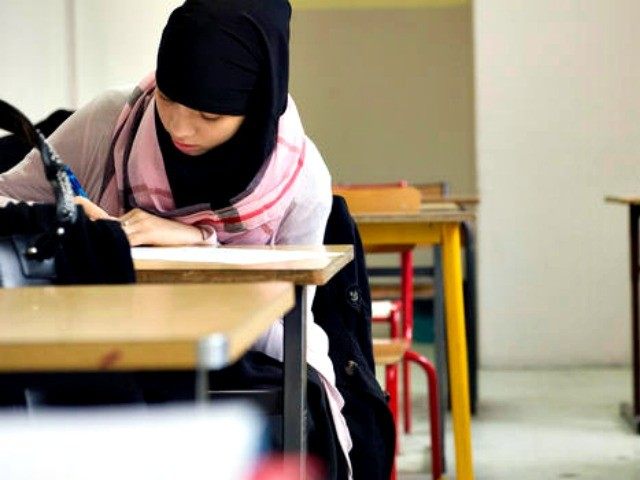Numerous high schools in Gaza have begun to expel female students because they did not wear headscarves on the first day of school. There is no law that states female students must wear a headscarf, but that did not stop school administrators from punishing those who do not wear one.
“I was happy to begin the new school year, and was preparing for the first day of school like any other student,” explained Marah Nashwan, an 11th grader. “When I entered the school, I was surprised to encounter three teachers asking about my veil. I told them that I do not wear one.”
The principal “threatened to ban her from school as long as she does not wear a veil.” She received a three-day suspension, but when she returned to school, officials informed her they moved her to a different school.
A report in Huffington Post Arabic claims that some principals and teachers at schools will inspect classrooms. If a female is not wearing a headscarf or has a tight uniform, they kick out the student.
In 2009, Human Rights Watch (HRW) wrote a report condemning terrorist group Hamas, who has controlled Gaza since 2007, for their “unofficial orders” on Islamic dress codes aimed at females. The group wrote:
Human Rights Watch has received reports from Gaza residents that since the school year opened in late August, schools have been turning away female students for not wearing a headscarf or traditional gown, on the basis of new unofficial orders to schools from Hamas authorities. They are being told they must wear a jilbab, a long traditional gown, and a headscarf. Previously, the uniform typically required for female public school students was a long denim skirt and shirt. The new orders appear to have been issued without any legal basis.
According to Zeinab Ghonaimy, the director of the Center for Women’s Legal Research and Consulting in Gaza, at least one “school administrator slapped one female student in front of her schoolmates for not wearing the jilbab.”’
In April 2013, the Al-Aqsa University in Gaza caused outrage among its student body when administrators asked female students to “wear Islamic dress when attending class.” They also offered classes on how to dress appropriately. The changes included “wearing of the jijab (headscarf) and loose clothes such as wide trousers and long jackets.” However, the students believe the change was political since the school already holds single-sex classes. Student Leema Majdi explained what she witnessed at school:
“In the first month of the semester, the security at the university tried to stop girls who weren’t wearing what they thought was the right thing, and to tell them how to dress,” she points out. “If you didn’t comply, they would give you a ticket which says that you could be expelled if you don’t obey. The thing is, we’re all here because we want to finish our studies and get jobs, so we feel we have to go along with this.”
Majdi also argues that the rules are not consistent with Islamic teaching:
“We are all Muslims, but Islam is not about forcing people to make decisions like this,” she says. “If they want to sit down with us and discuss the guidelines about how women should dress in Islamic scripture, then we would happily have that discussion with them. But it would prove us right.”
That same year, Hamas instilled gender segregation in schools. Starting at the age of nine, males and females can no longer be in the same class.

COMMENTS
Please let us know if you're having issues with commenting.